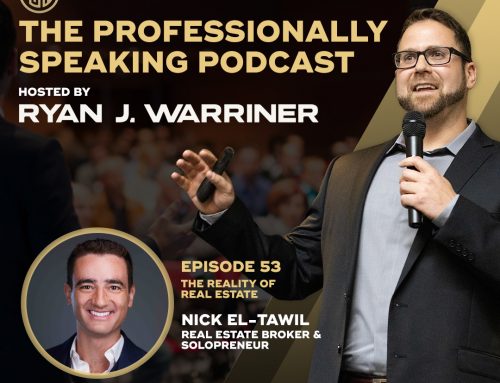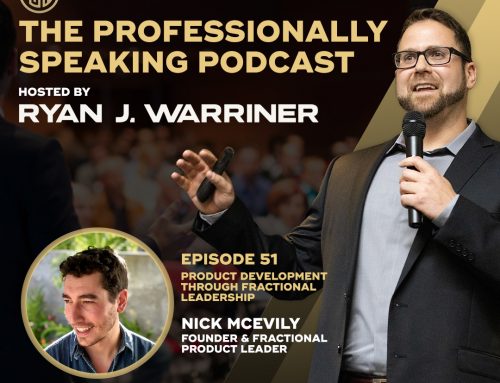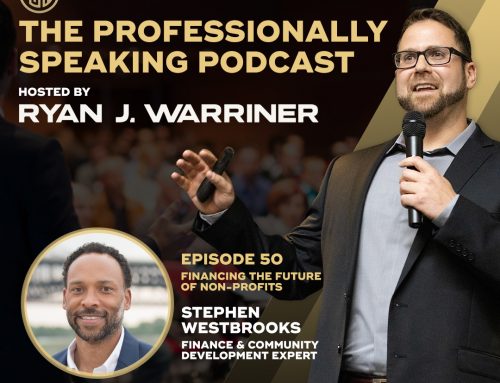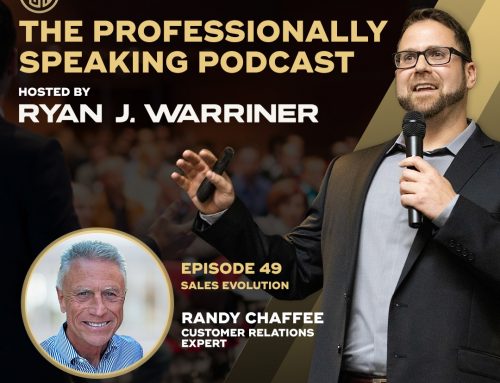The following is an excerpt from my forthcoming book, The Effective Presenter.
Public Speaking
TED talks and Toast Masters are excellent examples of public speaking, but not necessarily of professional presentations. What’s the difference? It starts with the purpose of each. Public speaking typically has a more general purpose. Most often, it’s to raise awareness about a particular issue or share a different perspective. It could also be to inspire, motivate, or entertain. In fact, TED is an acronym that represents Technology Entertainment Design. The key word being “entertainment.” Another example to consider is a comedian’s act. Stand-up comedy is a form of public speaking, but we wouldn’t consider a comedian on stage to be a professional presenter.
With a more general purpose and widely applicable message, a public speaker’s audience is typically more diverse. For example, there is a video circulating on the internet of a TED talk exploring the Marshmallow Challenge. The speaker, Tom Wujec from Autodesk, had collected data on different teams of people as they attempted to build the tallest structure with specific and limited supplies. The main message of the video was that “teamwork and belonging” are stronger contributors to group success than level of intellect. This emphasis on teamwork and belonging can be widely applied to different situations and is not limited to a single, actionable scenario.
Professional Presentations
In a professional presentation, the desired outcome is more focused, the audience is more specific, and the venue is often more exclusive. The desired outcome is not to entertain nor to captivate the audience, but to bring a specific result to fruition (i.e., investment, sale, update, etc.). The audience consists of people who are directly and significantly impacted by the presentation’s content. The atmosphere is professional, focused, and driven by results.
Success is measured by the degree to which presenters have achieved their desired outcome(s). Both presentation goals and desired outcomes will be expanded upon in Chapter 1, Specifying Purpose, but it is worth noting that this guide uses them as both the target, and the measuring stick, of success.
Comparison
The difference between public speaking and professional presentations is similar to the difference between a general medical practitioner and a medical specialist, with a key distinction being the audience. Public speaking and TED talks attract audiences from all walks of life on a variety of different topics. Because their range in audience is so vast, speakers must create an entertaining speech with widely relevant data. This is like a family doctor giving health advice to the masses such as: take vitamins, sleep sufficiently, and exercise regularly, which is quite useful and widely applicable. But such advice is not to be confused with that of a cardiologist, who can prescribe treatment after a double bypass operation. This is what a professional presentation is: a focused, specific oral communication, for a specific audience, to bring about a targeted outcome.
Being a Professional
This guide foregrounds professional presentations, which are, quite simply, presentations that take place in the professional sector. In the first chapter you’ll learn the relationship between presentation goals and desired outcome(s). One of your presentation goals that you’ll establish as you progress through the framework will be to project yourself as prepared, composed, well-spoken, and professional. This aspect also includes being well-dressed and groomed, arriving early, and being respectful to the audience. Ultimately, you need to look objectively at yourself as a presenter and ask yourself: “Would I choose me to be an ambassador for my company, organization, or department?” By this standard, being charismatic or charming is not as valuable as being professional.
A Shift in Perspective
A professional presentation is not ONE VS. MANY. It is not YOU VS. AUDIENCE. It is YOU + AUDIENCE VS. YOUR COMPETITORS / PAST PERFORMANCE / THE FUTURE / UNCHARTED TERRITORY. We will explore this perspective more thoroughly later on in this guide. It is key to strengthening confidence, as well as designing and producing more effective, professional presentations. Adopting this perspective is the first step in improving your skill set.









